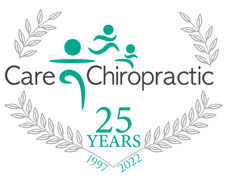Laying the foundation
Chiropractic care is like building a house – certain things have to happen in a particular order in order for everything to stand strong and work correctly. When building a house, if you tried to put up your walls before you had a solid foundation, your walls would be weak and eventually collapse. If you tried to put on your roof before the walls were ready, you would run into the same problem. The same is true for your body. Your body has to go through a particular plan of care in order to repair itself correctly and fully. There are three general phases of chiropractic care . . .
Phase 1: Relief Care
If you are in pain when you come into our office, the first objective is to help you feel better. Depending on the severity of your problem, it is typical to need care 2x/week for the first 2 weeks and 1x/week for the following 2 weeks. Each case is different and the treatment plan would be specific to what you present to the office with and could involve more or less visits depending on how your body responds to care.
Phase 2: Corrective/Restorative Care
During the corrective care phase, muscles and other tissues are allowed to heal more completely, thereby helping prevent injury. It is typical to need care 2-3 times per month for 6 months, depending on your overall health and the severity of your problem.
Phase 3: Wellness Care
Once your body has fully healed, it is important to come in for periodic adjustments to avoid problems in the future. Usually, this only requires a quick visit to the chiropractor 1-2 times every 4-6 weeks, based on your lifestyle and goals.
On your fist visit, the chiropractor may ask you a series of questions to better understand your current health such as any injury or surgery, medications you are taking and family health history. They may also perform some tests such as an analysis of your movement, test of your reflexes, strength and sensations plus an analysis of your posture. You may also be sent for x-rays, depending on your condition.
Following the physical assessment, we will talk with you about your diagnosis and treatment plan, and get your informed consent before you receive treatment/an adjustment. This might happen on the first visit, or you may be asked to make a second appointment so that we can fully consider your needs and develop your treatment plan.
If your condition is one that is not chiropractic in nature, or needs further investigation, you will receive a referral to another health care provider, which could include a direct referral to a medical specialist.
If you have any questions about anything during your treatment, always ask.


